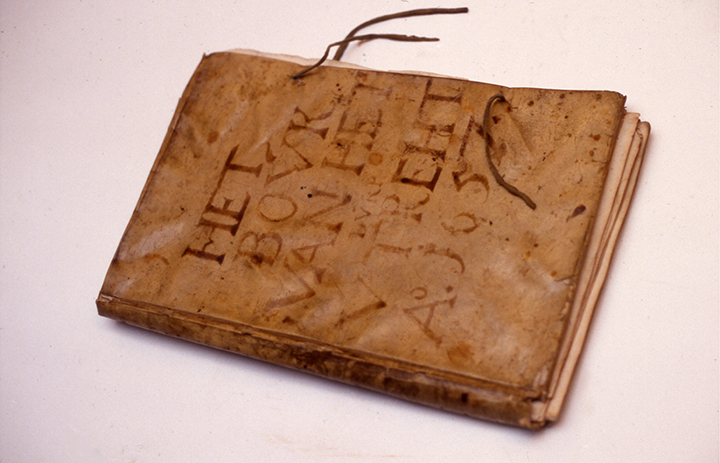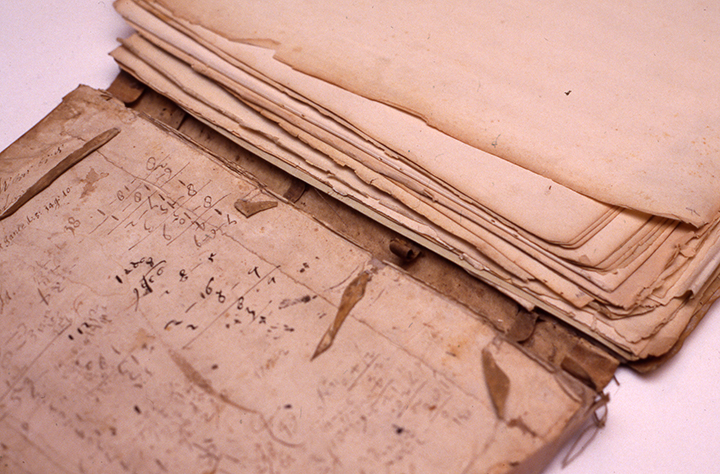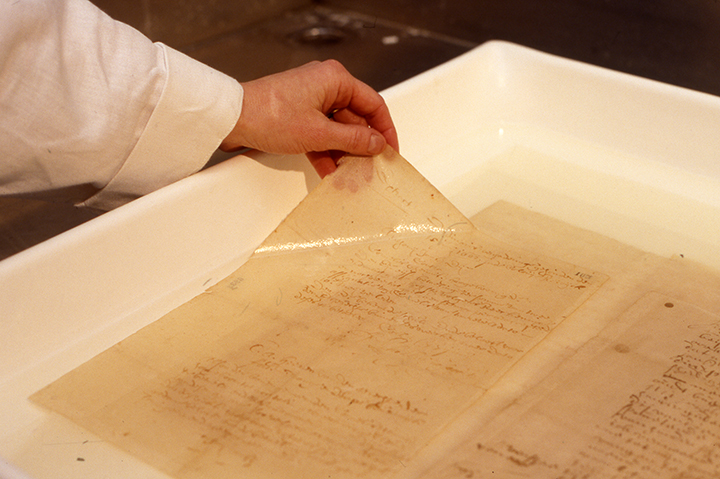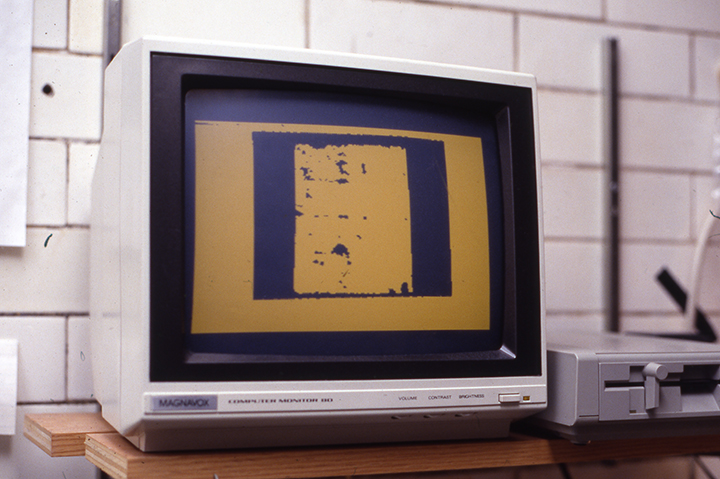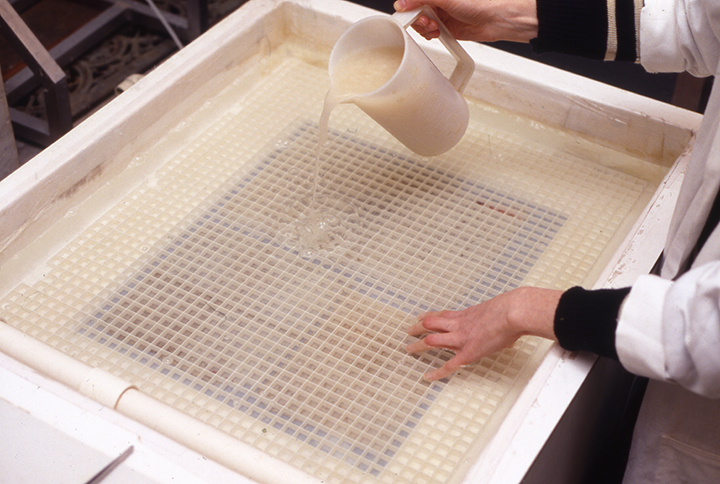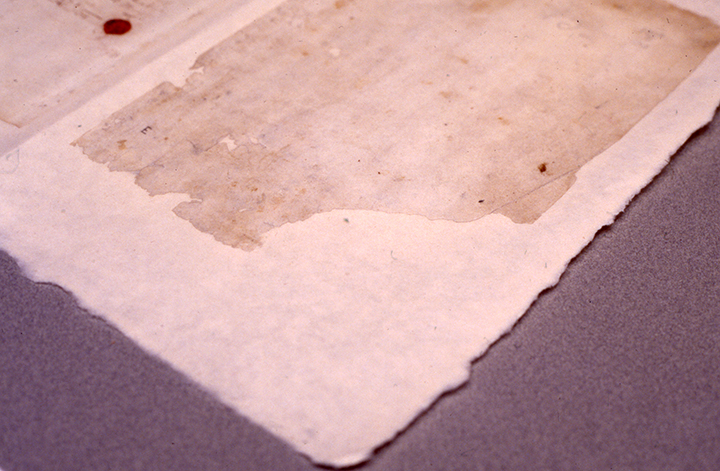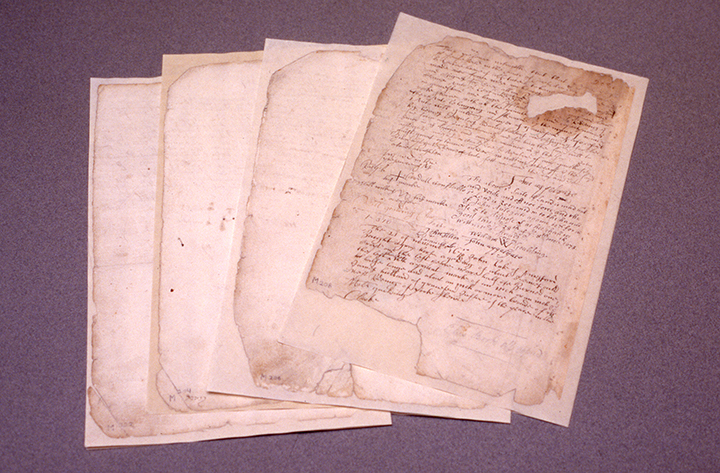Established in 1977, the conservation lab and its staff provide a stable environment for the Municipal Archives’ collections, insuring long-term preservation and accessibility. Conservators perform complex treatments such as removing pressure-sensitive tapes, reducing stains, repairing broken bindings, and mending water-damaged papers using the leaf caster, ultrasonic welder, cold-suction table and other specialized equipment. They also conduct careful surface cleaning, mending, and construction of archival-quality enclosures to extend the useful life of records by mitigating environmental risk factors.
LEAF-CASTING THE DUTCH COLLECTIONS
The Dutch New Amsterdam records required a variety of conservation treatments when they were acquired by the Municipal Archives.
As a first step, the conservators removed the volume bindings—the majority of the collection had been rebound in the mid-nineteenth century and the 1930s; and, more importantly, the spine titles did not accurately reflect the contents. Once unbound, each page could be treated as an individual document.
The conservators chose leaf-casting, a technique that uses a paper fiber slurry to fill gaps, repair tears, and reinforce the structure of the fragile documents. The conservators numbered all documents and washed them in deionized water or ethyl alcohol. They de-acidified them in a solution of magnesium bicarbonate and used a computer scanner to determine the exact quantity of pulp and water necessary to fill losses and tears.
The conservators blended unbleached cotton and linen fibers with water to make the pulp slurry. They laid each document on a screen in the leaf-casting machine along with the slurry. A vacuum pump pulled the water through the document and the pulp remained, filling in the losses and creating new margins. They then sized the documents with a solution of methylcellulose, and pressed them between woolen felts and boards to remove excess moisture. After further drying and flattening the documents were trimmed and collated into their original order.
After the leaf-casting process was completed, the documents were microfilmed to preservation standards. The conservators re-bound the documents in new preservation covers and placed them in custom-made drop-spine boxes.
Virginia Buchan, Ellen Chin, Nora Ligorano, Laura McCann, and Mark Rutledge were the MA conservators who worked on the various phases of the project.
